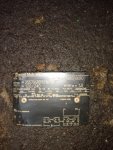electrofelon
Senior Member
- Location
- Cherry Valley NY, Seattle, WA
- Occupation
- Electrician
Is anyone by chance knowledgeable in navigating/finding square D series ratings? The information seems to be scattered all over their website, its not easy. They could definitely do a better job of organizing the data.
Ive got a 1976 power style switchboard
with a PA frame 1000A main, and Q2 distribution breakers. The main is 65K (@ 240). There is a mix of Q2 (10K AIC) and Q2H (22K) distribution breakers. I think the 10K ones were added after the fact. I looked here:
https://www.schneider-electric.us/en/download/document/2700DB9901/ and the closest thing I saw was a QD. I have a hard time believing the Q2 doesnt rate with the main. Want to confirm that it does and whether it needs to be the "H" version.
Ive got a 1976 power style switchboard
with a PA frame 1000A main, and Q2 distribution breakers. The main is 65K (@ 240). There is a mix of Q2 (10K AIC) and Q2H (22K) distribution breakers. I think the 10K ones were added after the fact. I looked here:
https://www.schneider-electric.us/en/download/document/2700DB9901/ and the closest thing I saw was a QD. I have a hard time believing the Q2 doesnt rate with the main. Want to confirm that it does and whether it needs to be the "H" version.


